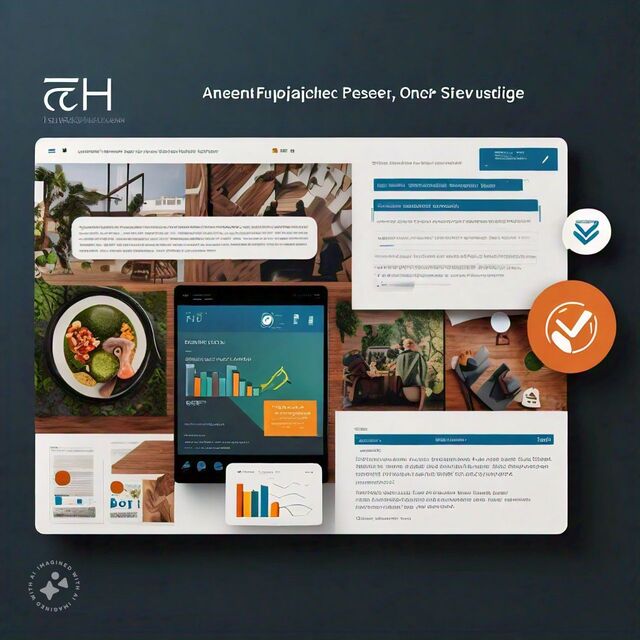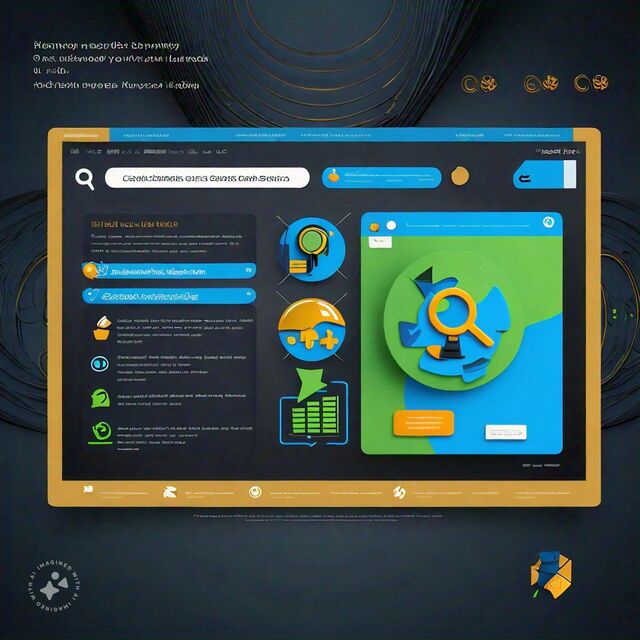If you’re beginning with SEO, “On-Page SEO” might sound challenging, but it’s one of the most crucial aspects of any SEO strategy. On-page SEO includes optimizing your website’s content and structure to enhance its exposure in search engine results. By learning and implementing these basic rules, you’ll be well on your way to higher rankings and increased visitors. In this manual, we’ll explain the essential rules of On-page SEO and how you can apply them step-by-step. But initially, let’s start by Debunking some common myths about SEO.
What Is SEO and Why Is It Important?
SEO or Search Engine Optimization is improving your website’s content and structure to boost its exposure in natural (non-paid) query results. When people search for anything on Google, they’re looking for answers. If your website appears for anything other than relevant searches, you’re missing out on many potential users and, more importantly, customers. SEO is crucial since natural search is one of the most significant drivers for website traffic. Natural entries often receive more clicks than paid ads since they are more reliable. For example, only about 2.8% of users click on paid ads, while the rest prefer natural results. So, by optimizing for SEO methods, you’re more likely to seize these valuable clicks.
Debunking SEO Myths
Myth 1: “Content is all you need.” While the content is king, it’s not the only component of SEO. On-page SEO includes technical parts like metadata tags, in-house linking, and page speed. These features work together to ensure Search engines properly index and rank your material.
Myth 2: “Page speed doesn’t matter.” This is false. Page speed is vital to both user knowledge and search rankings. A slow website annoys users and leads to higher drop-off rates (when users leave your website quickly). Google’s formulas favour websites that load soon since they provide an improved user experience.
Myth 3: “Links are dead.” Links are active and remain an essential component in how Google determines rankings. While off-page SEO (building external links) is vital, on-page SEO can influence how those links are valued, so don’t disregard it!
Myth 4: “Higher keyword thickness matches improved ranking.” This needs to be updated. Stuffing your page with keywords can harm your SEO. Google’s formulas have evolved to rank standard content that serves user intent rather than simply counting how often a keyword appears.
The Two Parts of Every SEO Campaign: On-page and Off-page SEO
Every effective SEO campaign consists of two main components:
- On-Page SEO: The optimizations you make directly on your website.
- Off-Page SEO: Off-page SEO activities include link-building and interactive material marketing.
For this blog post, we’ll focus on on-page SEO, the basis of any SEO strategy.
Essential Rules of On-page SEO
1. Title Tags: Crafting the Perfect Headline
Title tags are one of the initial items both users and search engines see. A well-crafted title label should:
- Include your focus keyword.
- Be brief (50-60 characters).
- Provide a precise description of your page’s content.
For example, if you’re writing about yoga mats, a good title could be “Best Yoga Mats for 2024: Comfort Durability and Value.” This title is optimized since it includes the main keyword (“yoga mats”) and adds value-driven information.
2. Meta Descriptions: The Teaser That Draws Clicks
Metadata details provide a brief overview of your page and should entice users to click on your link. They should:
- Be between 150-160 characters.
- Include the focus keyword.
- Provide a compelling reason to click.
A metadata description for our yoga mat article might be: “Discover the best yoga mats of 2024! From comfort to durability, find the perfect mat for your practice. Read more to explore our leading picks.”
3. Headers (H1, H2, H3): Organize Your Content
Headers help structure your content and make it easier to read. They also give search engines an evident idea of your content hierarchy:
- Use H1 for your main title.
- Use H2 for significant subtopics.
- Use H3 to support arguments under those subtopics.
For example, in this blog post, the H1 is the main title, “Master On-page SEO: Essential Rules Every Beginner Must Know, “while each significant section (like this one) is an H2.
4. Keyword Placement: Smart Usage Not Stuffing
Instead of stuffing keywords everywhere, place your primary keyword strategically:
- In the title tag.
- In the metadata description.
- In the initial 100 words of your content.
- Naturally, throughout the words without disrupting the flow.
For example, the keyword “yoga mats” should appear naturally within the background without overloading the page with avoidable repetitions.
5. Image Optimization: Speed and Relevance Matter
Pictures enhance your content, but they need to be optimized for SEO:
- Use detailed document names (e.g., “best-yoga-mat-2024.jpg” instead of “IMG12345.jpg”).
- Add alt words with your keyword (e.g., “A high-quality yoga mat for 2024”).
- Compress pictures to reduce document dimension and enhance page load speed.
6. Internal Linking: Connect Your Content
In-house links manual users to other relevant content on your website and helps query engines understand your website’s structure. For example, if you’ve written a manual on “Yoga Poses for Beginners,” link to that from your yoga mat article. This keeps users on your website longer and strengthens the SEO of related pages.
7. Page Speed: Fast Sites Rank Higher
As mentioned earlier, page speed is a vital ranking factor. Use instruments like Google’s Pages Peed Insights to analyze your site’s performance. Compress images, use web browser caching, and minimize CSS and Javascript to speed up your site.
8. Mobile Optimization: The Mobile-first Approach
Google uses mobile-first indexing, which primarily considers your website’s mobile version when determining rankings. Ensure your website is fully flexible and provides outstanding user knowledge on mobile devices.
Practical Examples and Key Insights
Let’s tie it all together with a helpful example. Say you’re optimizing a blog post on “Best Operating Footwear for 2024.” Here’s how you could apply the rules of On-page SEO:
- Title Tag: “Top 10 Best Operating Footwear for 2024 – Comfort & Performance”
- Meta Description: “Explore the leading ten operating footwear of 2024. From efficiency to comfort, find the perfect suit for your operating style. Read more for our leading picks.”
- Headers: H1 – “Best Operating Footwear for 2024 ” H2 – “Top Features to Look For ” H3 – “Best Footwear for Long-distance Running”
- Image Optimization: Use an image of an operating footwear titled “best-running-shoes-2024.jpg” with alt words “A high-performance operating footwear for 2024.”
- Internal Linking: Link to articles like “How to Choose the Right Operating Shoe” or “Best Operating Trails Near You.”
On-Page SEO valuable links.
1. Moz’s Beginner’s Guide to SEO
2. Google’s SEO Starter Guide.
3. Yoast SEO On-Page SEO Tips.

Conclusion: Take Control of Your SEO Success
On-page SEO is the base of an effective SEO strategy. By mastering the essential principles—like optimizing title tags, improving page speed, and improving mobile responsiveness—you’ll enhance your Search engine positions and create an improved user experience. Now that you’ve learned these rules, it’s the duration of our website’s development. Review your review and recognize regions that need more help. Leave a comment, share this post, or subscribe for more actionable SEO tips!
Call to action: Ready to boost your website’s rankings? Start implementing these On-page SEO methods today and watch your users grow. Remember to share this post with others who might find it helpful!

The Best Gaming Laptops to Buy Right Now: Comprehensive 2024 Guide
Discover the best gaming laptops in 2024, from budget-friendly options to premium picks, with our complete guide covering key features, ...

Understanding Life Insurance Rate Charts by Age: What You Need to Know
This blog post explores the importance of life insurance rate charts by age, highlighting their benefits and providing practical tips ...

Top Smart Rings of 2024: Features, Benefits, and Future Trends in Wearable Tech
Discover the top smart rings of 2024, including the Oura Ring, Ultrahuman, and RingConn, and see how wearable tech is ...

Top 10 Budget Gaming Smartphones Under $1000: Ultimate Power
Discover the ultimate list of the top 10 gaming smartphones under $1000. Detailed reviews, specs, and comparisons to help you ...

The Best Gaming Laptops to Buy Right Now: Comprehensive 2024 Guide

Understanding Life Insurance Rate Charts by Age: What You Need to Know

Top Smart Rings of 2024: Features, Benefits, and Future Trends in Wearable Tech




